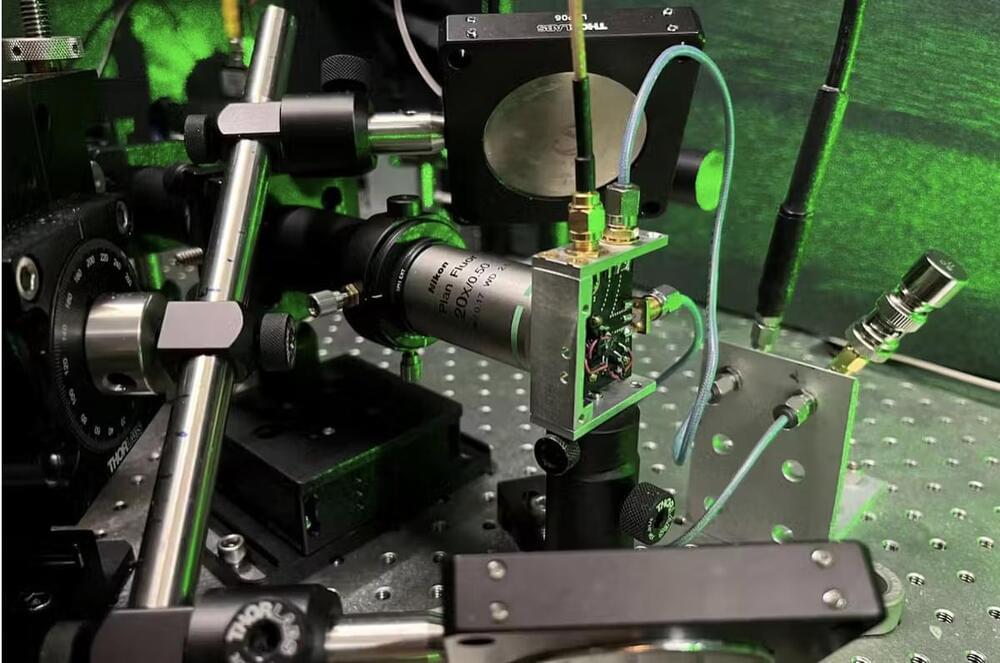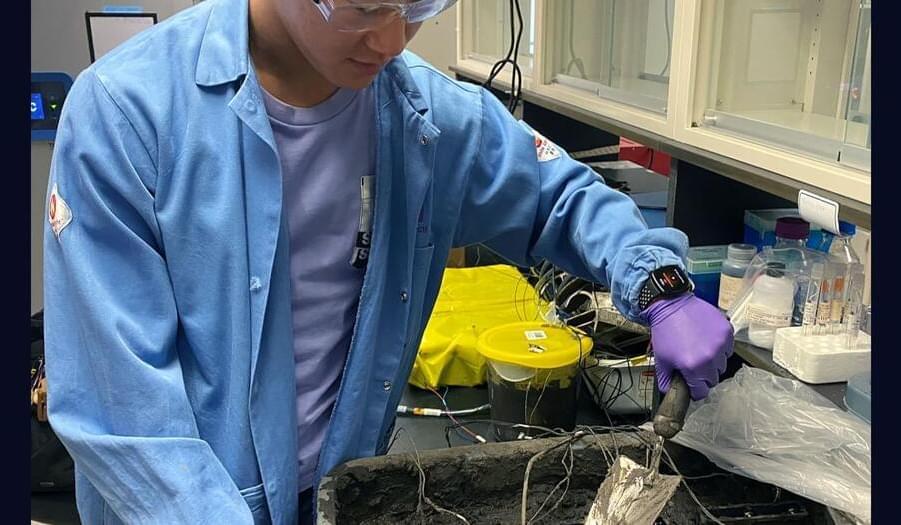A physicist writes an article in The Conversation exploring when quantum computers might achieve quantum advantage.


The research, which was conducted on mice, demonstrates how these tiny nanomachines are propelled by urea present in urine and precisely target the tumor, attacking it with a radioisotope carried on their surface.
Bladder cancer has one of the highest incidence rates in the world and ranks as the fourth most common tumor in men. Despite its relatively low mortality rate, nearly half of bladder tumors resurface within 5 years, requiring ongoing patient monitoring. Frequent hospital visits and the need for repeat treatments contribute to making this type of cancer one of the most expensive to cure.
While current treatments involving direct drug administration into the bladder show good survival rates, their therapeutic efficacy remains low. A promising alternative involves the use of nanoparticles capable of delivering therapeutic agents directly to the tumor. In particular, nanorobots—nanoparticles endowed with the ability to self-propel within the body—are noteworthy.



For thousands of years, the moon inspired humans from afar, but the bright beacon in Earth’s night sky — located more than 200,000 miles (321,868 kilometers) away — remained out of reach. That all changed on September 13, 1959, when the former Soviet Union’s uncrewed spacecraft, Luna 2, landed on the moon’s surface.
The Luna 2 probe created a crater when it touched down on the moon between the lunar regions of Mare Imbrium and Mare Serenitatis, according to NASA.
That pivotal, lunar dust-stirring moment signaled the beginning of humanity’s endeavors to explore the moon, and some scientists now suggest it was also the start of a new geological epoch — or period of time in history — called the “Lunar Anthropocene,” according to a comment paper published in the journal Nature Geoscience on December 8.
The brain, despite its comparatively shallow structure with limited layers, operates efficiently, whereas modern AI systems are characterized by deep architectures with numerous layers. This raises the question: Can brain-inspired shallow architectures rival the performance of deep architectures, and if so, what are the fundamental mechanisms that enable this?
Neural network learning methods are inspired by the brain’s functioning, yet there are fundamental differences between how the brain learns and how deep learning operates. A key distinction lies in the number of layers each employs.
Deep learning systems often have many layers, sometimes extending into the hundreds, which allows them to effectively learn complex classification tasks. In contrast, the human brain has a much simpler structure with far fewer layers. Despite its relatively shallow architecture and the slower, noisier nature of its processes, the brain is remarkably adept at handling complex classification tasks efficiently.

Eduard Shyfrin, Ph.D., author of “From Infinity to Man: The Fundamental Ideas of Kabbalah Within the Framework of Information Theory and Quantum Physics,” addressed attendees at the eighteenth World Union of Jewish Studies Conference in Jerusalem on Monday.
Shyfrin spoke via Zoom on Kabbalah of Information: Absence of Information is Information’. He explained how Kabbalistic ideas can be explained using the support of information theory and physics.

When young, these neurons signal fatty tissues to release energy fueling the brain. With age, the line breaks down. Fat cells can no longer orchestrate their many roles, and neurons struggle to pass information along their networks.
Using genetic and chemical methods, the team found a marker for these neurons—a protein called Ppp1r17 (catchy, I know). Changing the protein’s behavior in aged mice with genetic engineering extended their life span by roughly seven percent. For an average 76-year life span in humans, the increase translates to over five years.
The treatment also altered the mice’s health. Mice love to run, but their vigor plummets with age. Reactivating the neurons in elderly mice revived their motivation, transforming them from couch potatoes into impressive joggers.

A team of researchers from the Structured Light Laboratory at the University of the Witwatersrand, South Africa, has made a significant breakthrough regarding quantum entanglement.
Led by Professor Andrew Forbes, in collaboration with renowned string theorist Robert de Mello Koch, now at Huzhou University in China, the team has successfully demonstrated a novel method to manipulate quantum entangled particles without altering their intrinsic properties.
This feat marks a monumental step in our understanding and application of quantum entanglement.

Putting “socks” on artificial muscles made from inexpensive materials helps them produce 40 times more flex than human muscle, a global research project has found, featuring researchers from the University of Wollongong (UOW) at the ARC Centre of Excellence for Electromaterials Science (ACES).
UOW researchers from ACES joined with international partners from the U.S., China and South Korea to develop sheath-run artificial muscles (SRAMs), that can be used to create intelligent materials and fabrics that react by sensing the environment around them.
It builds on the work over the past 15 years by researchers from UOW and their international colleagues who have invented several types of strong, powerful artificial muscles using materials ranging from high-tech carbon nanotubes (CNTs) to ordinary fishing line.